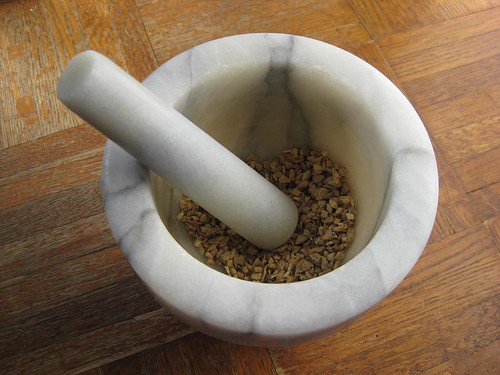Sugar cookies can’t be too rich and buttery if you want to roll them, and the really good historical cakes and cookies aren’t cookie-like enough to pass for Santa fare. But we can mine those recipes for flavor ideas. Herewith, some historically plausible (1750-1850) flavorings for your Christmas sugar cookies that will kick them up a little without competing with the gingerbread. […]
Pounding ginger
I have been researching historical gingerbread lately, for a probable book project on nineteenth-century American cooking. The first part of the research involves cataloguing recipes. So far I have thirty-eight recipes for gingerbread published in the United States prior to 1832, all neatly stored in a database and assigned appropriate metadata. Don’t panic: I’m not going to tell you all about the metadata. I’m going to tell you about spices.
As a cultural historian I’m interested in the deeper meanings and broader implications of everything, and I know that often people eat what they eat and cook the way they cook because of tradition or philosophy or politics. But as a cook and a craftsman I know that sometimes people have more practical reasons for doing things that are almost impossible to discover unless you actually try to do them. I’m interested in not just inner feelings and amorphous notions but in the sounds and smells and tastes that were the fabric of life in other times and places, the constant movements and sensations without which culture is just a topic for anthropological discourse. It seems to me that if you want to research the history of food, you need to get in the kitchen.
So I started baking gingerbread.
